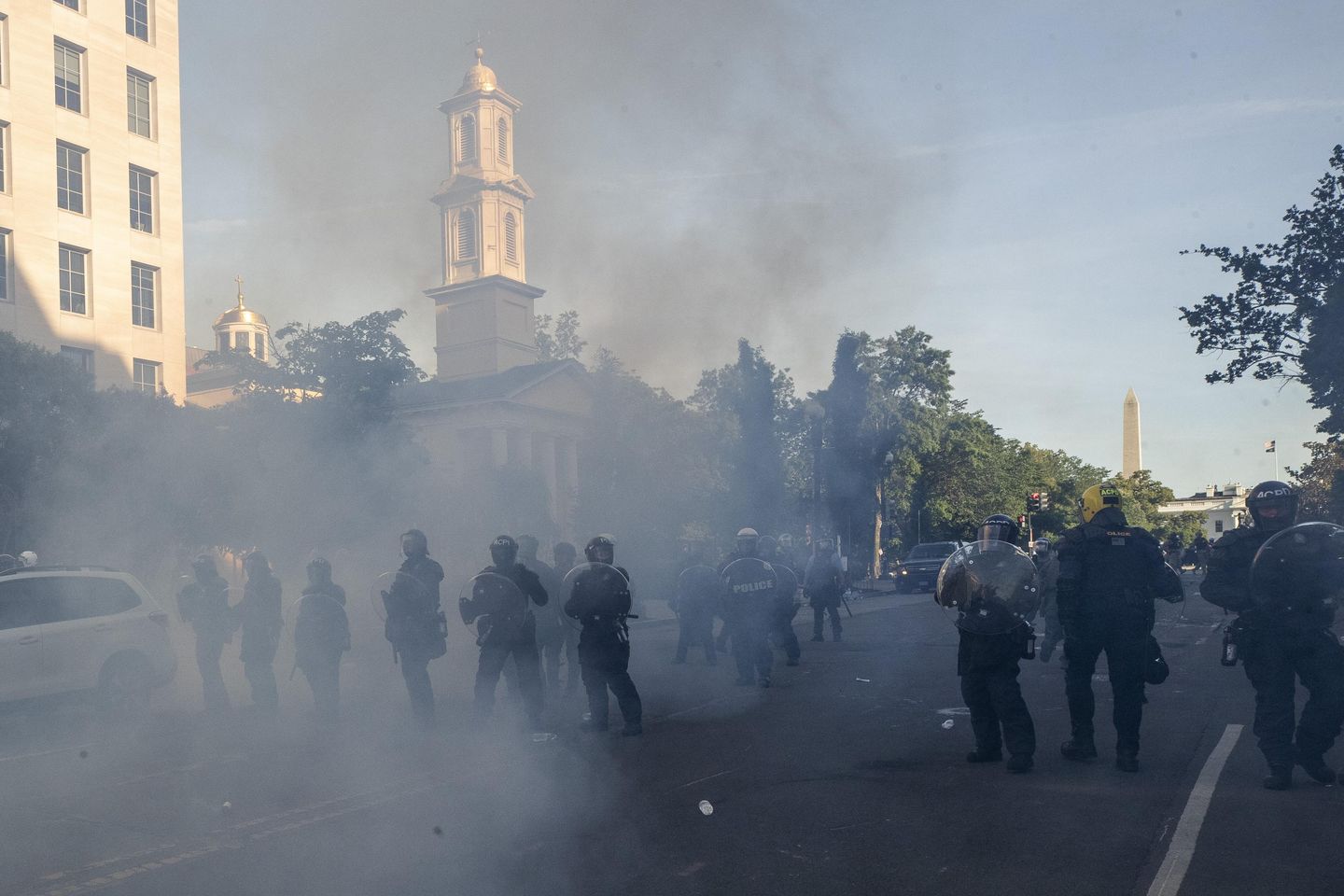The federal report that cleared former President Trump of ordering police to clear Black Lives Matter protesters from Lafayette Park could be part of the government’s defense against a lawsuit claiming the feds violated the protesters’ constitutional rights, said legal scholars.
Clay Calvert, a law professor at the University of Florida, said the government can use the inspector general report because the inspector general’s office is an independent agency.
“It certainly could be admitted to come in,” he said. “How much weight is given to it is a different matter.”
Laurence Tribe, a law professor at Harvard University, said the report adds “marginally to the credibility of the government’s arguments” to dismiss the case.
“But the legal standards governing the suit are distinct from those implicitly driving the [Office of Inspector General] report, so I’d hope the court in which the lawsuit is pending will keep its eyes on the relevant referees and under the applicable standards,” said Mr. Tribe.
The American Civil Liberties Union sued members of the Trump administration after the incident last year, alleging the president and his team conspired to squelch the protesters’ rights.
They claimed the officers attacked them with tear gas and other crowd-control weapons. The Metropolitan Police Department is also named as a defendant.
The case is still pending.
The Justice Department, which is now defending the lawsuit under President Biden, did not immediately respond to a request for comment about the plans for the defense case.
But the report published Wednesday by the Interior Department’s inspector general found that Mr. Trump did not order the removal of the protesters so he could walk from the White House to a nearby church for a photo op.
Instead, the report concluded that the U.S. Park Service had the authority to disperse the protesters and did so to construct a fence, which was completed by 12:30 a.m. the following day.
It also said the feds did not use tear gas at Lafayette Park but the city’s Metropolitan Police Department did use tear gas on a nearby mob.
On June 1, Mr. Trump walked from the White House across Lafayette Park to St. John’s Episcopal Church which earlier had been set on fire by protesters.
The activists had gathered in Lafayette Park near the White House days for days to protests the killing of George Floyd and demand racial justice reforms.
Media pundits quickly criticized the federal agents and the former president for the treatment of the Black Lives Matter activists.
Attorneys for the District of Columbia argued recently in court papers that the ACLU’s case should be dismissed and that the use of tear gas in the area by MPD was reasonable. The court filing also said the police did not conspire with the federal agents.
A spokeswoman from the ACLU said the organization is not concerned that the government’s report will impact their case against the former president’s administration.
“Whatever their reasoning, the attacks on demonstrators were fully unconstitutional,” said Ginny Simmons, who works with the ACLU.
Scott Michelman, legal director for the ACLU of the District of Columbia, said the government has given “conflicting explanations for the shocking act on civil rights demonstrators.”
At first, the Justice Department originally said former Attorney General William P. Barr gave the order to disperse the protesters, he noted.
“These shifting explanations cannot distract from the fundamental problem: The force used against the demonstrators at Lafayette Square was grossly excessive,” said Mr. Michelman.
Mr. Trump, though, celebrated the findings by the IG earlier this week.
“As we have said all along, and it was backed up in today’s highly detailed and professionally written report, our fine Park Police made the decision to clear the park to allow a contractor to safely install antiscale fencing to protect from Antifa rioters, radical BLM protestors, and other violent demonstrators who are causing chaos and death to our cities,” Mr. Trump said on Wednesday.
“In this instance, they tried burning down the church the day before the clearing. Fortunately, we were there to stop the fire from spreading beyond the basement—and it was our great honor and privilege to do so.”
